Where is the flock that was entrusted to you, your beautiful flock?
(Jeremiah 13:20)
During the 2019 Nurture and Retention Summit, over 100 Church leaders from around the world gathered to discuss issues related to retaining and nurturing Adventist church members.
Dr. Lisa Beardsley-Hardy, Director of the Department of Education at the General Conference of Seventh-day Adventists and Dr. John Wesley Taylor V, Associate Director of the Department of Education presented data on youth retention in relations to Adventist education. During the presentation titled “The Role of Seventh-day Adventist Education in Youth Retention” important questions were asked, such as: Is Adventist education a mission field? And if so, is it effective?
Dr. Taylor presented data from seven individual studies, looking at Adventist families and if Adventist education did have an impact on children to become and to remain an Adventist member. These seven individual studies covered three decades, and provide consistent results across time and place.
According to the Valuegenesis3 Study in 2010, a study based on responses from over 18,000 students in grades 6-12 that explored the faith, values, and commitments of Seventh-day Adventist young people, Adventist education plays a significant role in the development of religious faith, as the graphic below shows.
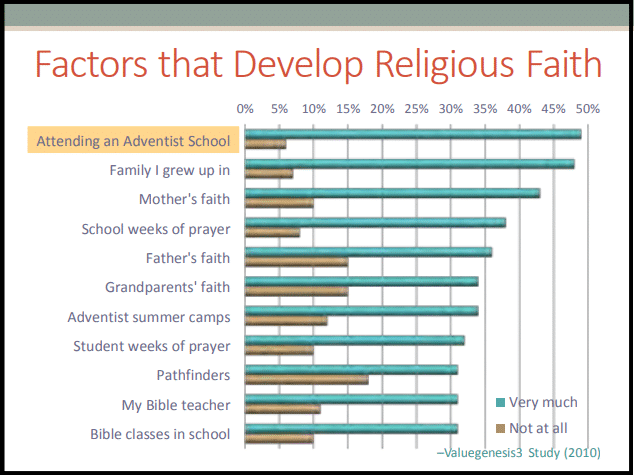
How about measurable results? Are there correlations between attending a specific school type and church membership? The Epperson Study looked at children of Adventist families in the Southern Union, in regards to the decision making to become a baptized church member and church attendance, based on the school type they attended. While almost 60 % of children that were not exposed to Adventist Education, decided to become baptized, 40% were never baptized. However, close to 85% of children attending an Adventist school for one or more years and almost 97% of children attending an Adventist school for 11 years or more decided to become a baptized member.
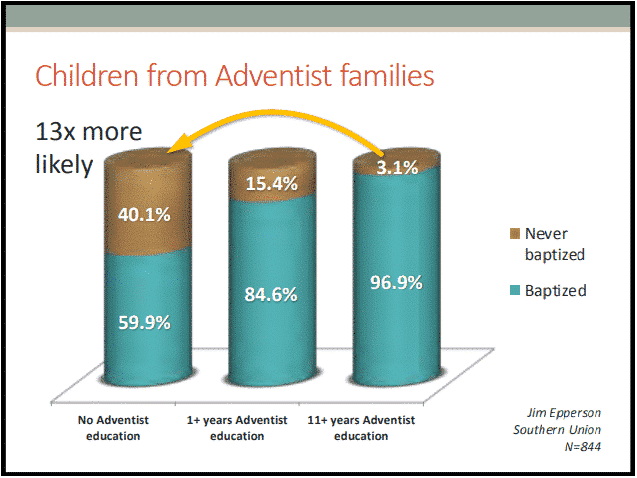
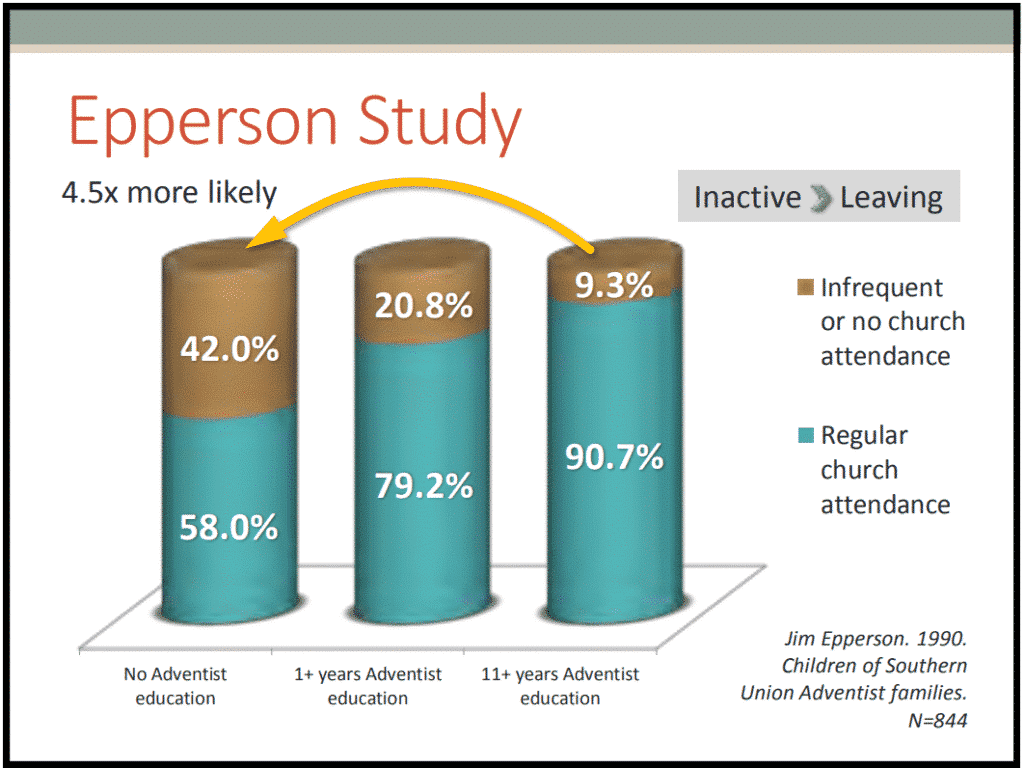
The study also showed a correlation between regular church attendance and the number of years spent in an Adventist school. The longer they were attending an Adventist school, the more regular was their church attendance.
Adventist education is also impacting children favorably in regards to developing attitudes toward paying tithe, marriage, and their commitment to the Church, as stated by a 13-year long study by Robert Rice. Adventist education is also impacting children favorably in regards to developing attitudes toward paying tithe, marriage, and their commitment to the Church, as stated by a 13-year long study by Robert Rice.
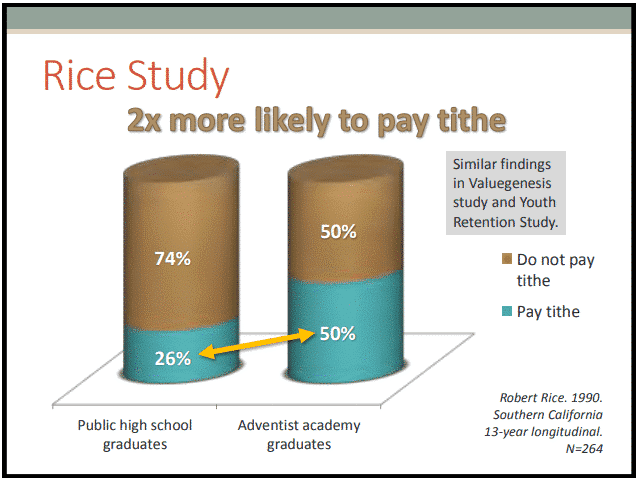
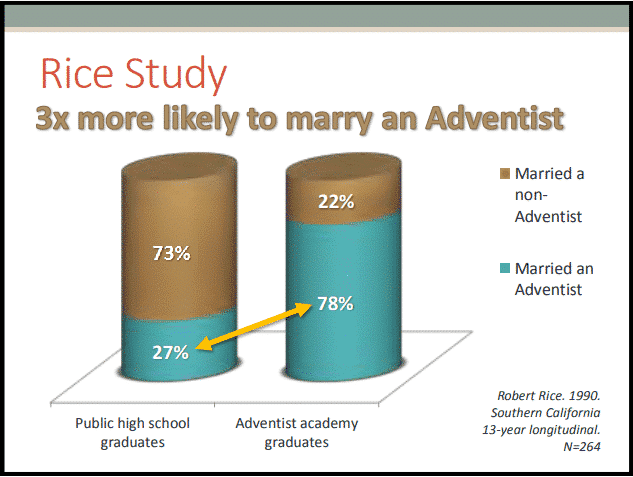
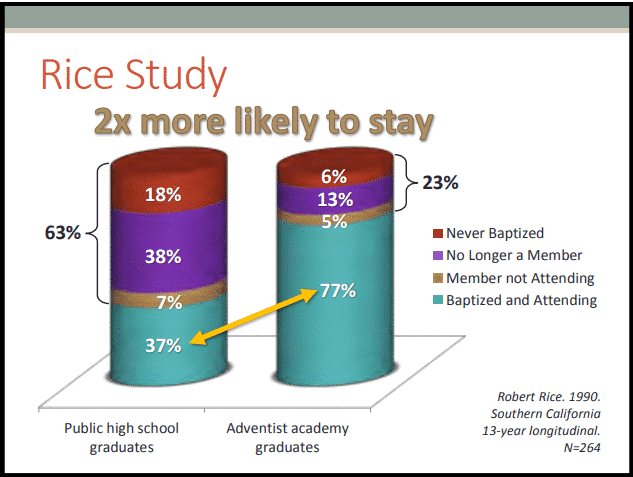
The graphs above show that children exposed to Adventist education are two times more likely to pay tithe, three times more likely to choose a partner of the same faith, and two times more likely to stay active church members.
As we are looking at the data presented on the subject of Youth Retention in regards to Adventist education, it becomes clear that attending an SDA school does have a great impact on our Adventist children and their future development to become an active church member.
Therefore, Dr. Taylor V concluded that Adventist education is the longest and largest evangelistic event held by the Adventist church with a duration of 800 – 37,400 hours, depending on the number of years children spend in Adventist education, and it is a very effective approach.
Ellen White wrote: “… True education means more than the pursual of a certain course of study. It means more than a preparation for the life that now is. It has to do with the whole being, and with the whole period of existence possible to man. It is the harmonious development of the physical, the mental, and the spiritual powers. It prepares the student for the joy of service in this world and for the higher joy of wider service in the world to come.”
For more information on “The Role of Seventh-day Adventist Education in Youth Retention” by Lisa Beardsley-Hardy and John Wesley Taylor V, click here.
blog written by Manuela Coppock

